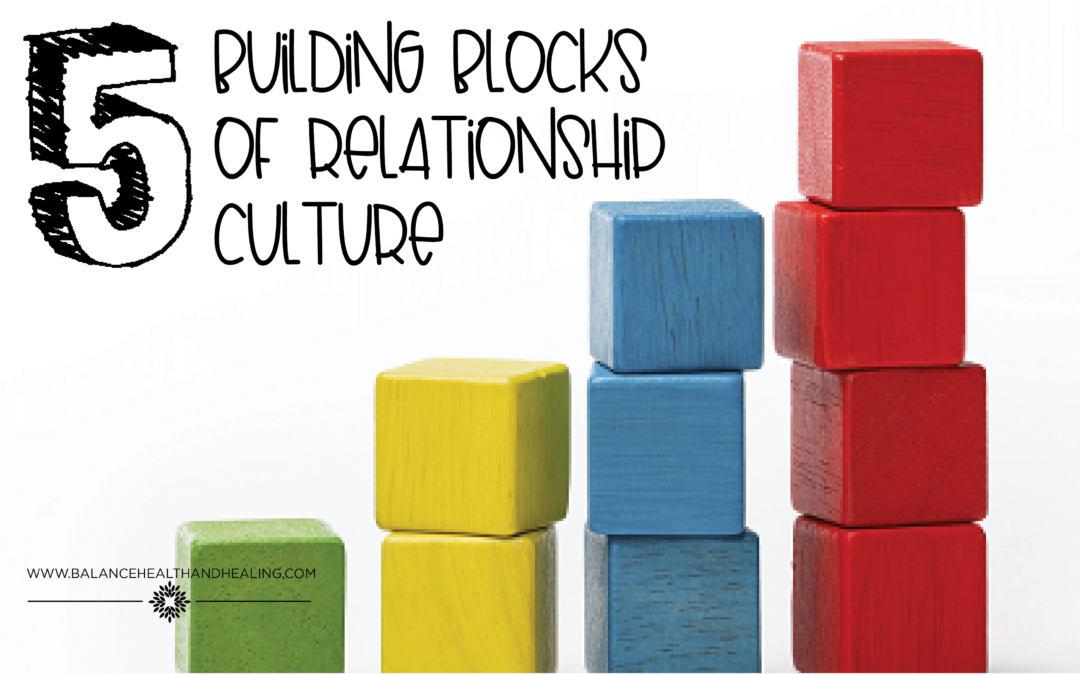My last blog discussed the culture we create within our relationships. If you missed this blog, feel free to check it out HERE.
Making any sort of intentional change in our relationships can be difficult to say the least. Navigating how to balance more than one individual’s emotions, opinions, experiences, etc. can be a daunting task. That being said, establishing a supportive relationship culture that works for you will make it much easier to make decisions, meet one another’s’ needs, and face problems together in the long run.
Building Block 1: Partner Buy-In
Because relationships involve more than one person, developing an intentional relationship culture requires more than one person, for better or worse. Each partner brings to the relationship ways of doing things, influenced by pieces of cultures they’ve been a part of (religion, ethnicity, family, company, society, etc.). As such, each brings unique strengths and difficulties to your relationship culture. Trying to blend and patchwork various ways of doing things can be tricky. To create the most intentional relationship culture that works for both of you requires both partners buy in to “trying on” new ways of doing things.
brings to the relationship ways of doing things, influenced by pieces of cultures they’ve been a part of (religion, ethnicity, family, company, society, etc.). As such, each brings unique strengths and difficulties to your relationship culture. Trying to blend and patchwork various ways of doing things can be tricky. To create the most intentional relationship culture that works for both of you requires both partners buy in to “trying on” new ways of doing things.
Building Block 2: The Problem is the Problem
One key to building a healthy relationship culture is to be sure not to label your partner as the problem. For example, if you and your partner react negatively to one another in a fight, the tendency is to want to label your partner as the issue. This can quickly break down relationships, cause resentment, and trigger defensiveness in your partner. Instead, try labeling the problem as the problem. What I mean by this is maybe try labeling your pattern of defensiveness and anger when you disagree as the problem. This allows you and your partner to unite against this negative cycle, own up and take responsibility for the role each of you plays, and gives a clear and concrete goal to work on.
Building Block 3: Establish Shared Values & Lean in to Vulnerability
Another important aspect of growing and developing the kind of relationship culture you want in your relationship is to develop shared values. Values can help guide your decision making in your relationship. For example, if you and your partner have a shared value of empathy in your relationship, when things are difficult each of your will choose to hear the other person out and try to understand their perspective and emotional reactions. One value that I believe is paramount in a healthy relationship culture is vulnerability. With your partner, decide if this is a value you are willing to include in your relationship culture. It’s not always an easy value to live by but will ultimately benefit your relationship and your connection in beautiful ways.
vulnerability. With your partner, decide if this is a value you are willing to include in your relationship culture. It’s not always an easy value to live by but will ultimately benefit your relationship and your connection in beautiful ways.
Building Block 4: Debrief Difficulties
Difficulties will arise in your relationship. That’s just how things go when you are trying to combine two lives together! One important way to let these difficulties be constructive rather than destructive is by discussing them afterwards. This is not necessary for every little conflict but could be helpful when tensions are running high. You and your partner may find it helpful to look at a disagreement, argument, etc. and ask: “What do we like about how we handled this situation? What do we want to do differently in the future? Now that we aren’t as heated, what was going on for you during this difficult situation?” Debriefing difficult moments in your relationship can allow you to learn from your mistakes, continue doing the things that work, and establish new patterns for navigating difficulties moving forward.
Building Block 5: Engage in Relational Conversations
Finally, to intentionally set a relationship culture for yourself, make discussing relationships a part of your normal conversations. This doesn’t always have to be about your own relationship. While watching The Office, comment on what you like about Jim and Pam’s relationship and what you’d want to do differently. Have discussions about what you’ve seen your parents and grandparents do. Did you like the way they communicated? Did the way they made decisions work for them but would never work for you? Having relational conversations normalizes talking about and adjusting relationships and can be a good way to show intention with your own relationship.
Although there are MANY ways to build a relationship culture, I hope these five building blocks sparked ideas for you and gave you some more concrete direction in how to begin this intentional molding process. The foundation of your relationship culture might stay the same over the years, but my guess is this will be something that really grows and develops over time. However you decide to approach your own relationship culture, I hope it allows you to thrive, connect, and feel loved.

